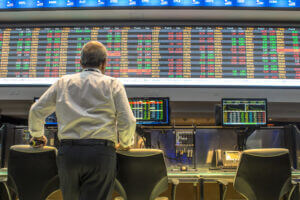On November 27, the U.S. dollar declined in early London trading as it continued weekly loss against a basket of currencies.
The greenback decreased by more than 2.2% during the month as global market sentiment increased on Joe Biden’s U.S. election victory and news of progress in coronavirus vaccines. That factors weighed on demand for the safe-haven currency.
However, sentiment became more mixed after several scientists called into question AstraZeneca’s vaccine’s success rate.
On Monday, the British drugmaker announced that its vaccine was 70% effective in pivotal trials and could be up to 90% effective.
According to ING strategists, virus and vaccine news remain the main catalysts for markets. They added that risk sentiment still seems in stabilization mode, and the dollar may keep wavering nearly 2-year lows, the 92.00 level for DXY.
Furthermore, the greenback stood at 91.953 against a basket of currencies at 0831 GMT. It was down 0.1% on the day and near to three months low. On Thursday, market price-action was limited by Thanksgiving in the U.S., which will be operating on reduced trading on October 27.
The British sterling was steady at $1.3369 as U.K. investors watched Brexit negotiations for signs of progress. On Friday, the European Union’s chief negotiator announced he would travel to London later to resume talks.
There were not detected new cases in Victoria
Moreover, the Australian dollar increased to its nearly three-month high in early London trading while at 0834 GMT, it was up 0.2% and stood at 0.7375.
Victoria, which is Australia’s second-largest state, announced on Friday that during 28 days, there were not detected new coronavirus cases. Significantly, earlier this year, Victoria was the country’s coronavirus hotspot.
The New Zealand dollar increased by 0.1% on the day and settled at 0.7019. It has to be mentioned that the New Zealand dollar is having its best month since late 2013.
Derek Halpenny, the strategist at MUFG, announced that the biggest risk for financial markets is now the failure of vaccines being launched evenly in the first quarter of 2021. He added that other risks are a steady rise in coronavirus cases and deaths in the United States. According to him, if President Joe Biden introduces new lockdown restrictions while the world is recovering next year, then that provides an extra reason to sell the greenback.
Additionally, the dollar-yen declined by 0.2% and settled at 104.03. China’s offshore yuan was on track for its first week of net losses against the greenback this month. The euro increased by 0.1% and touched $1.1925. Euro-sterling was steady at 89.33 pence per euro.










